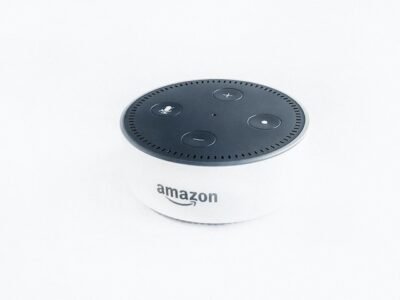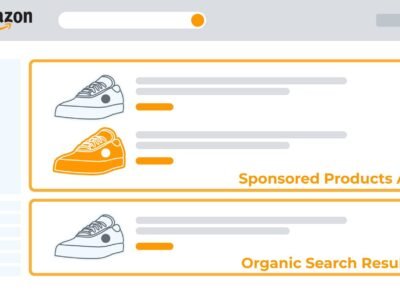You’ve chosen to sell on Amazon, then. excellent decision.
Amazon is the biggest online retailer in the world, with 9.7 million sellers and a strong expansion plan. If you have something intriguing to offer and a need that a buyer has that you can fill, you’re undoubtedly in the correct spot. Just two years ago, third party seller services generated £70.5M in cumulative sales.
How much will it cost you to start selling on Amazon?
Let’s divide our expenses into four categories to make it easier for you to comprehend how selling on Amazon costs are calculated:
Fees for Amazon Seller Account
You can pick between two different types of Amazon seller accounts, each with different features and pricing designed to meet different selling requirements, such as low-volume sellers versus high-volume business sellers.
Individual (low volume) seller – This option is best for individuals and infrequently operating businesses. There is no initial monthly cost, and the listing fee is $0.99 for each item sold.
Professional (high volume) seller – This plan is designed for companies and volume sellers, and it has a £39.99 monthly subscription but no listing fee.
How do you choose the account that’s best for you?
The Professional Seller account is the one you should choose if you’re an established seller migrating to Amazon because the Individual Seller account has fewer features and requires more “hands-on” maintenance.
The Individual Seller account, on the other hand, is the way to go if you’re just getting started with online selling and using a platform like Amazon for the first time because it has no upfront expenses – neither for registration nor for displaying your products. In actuality, you don’t pay until your things start to sell, and even then, your payout is automatically reduced.
Fees connected to Amazon Sales
As soon as you begin selling goods on Amazon, three different sale-related fees come into play:
Referral fees – All Amazon sellers, regardless of the type of account they have, are required to pay a referral fee for each product they sell on the website. The primary determining variables for referral fees are product category and selling price.
Referral fees are calculated as a portion of the selling price of your goods. According to the categories your products are in, the fees can range from 6% to 45%, but the majority of merchants presently pay approximately 15% on average.
Minimum referral fees: Certain categories are given a minimum referral fee by Amazon. You will therefore pay the higher of the two fees, based on the selling price, if the category your product belongs to has a minimum referral charge. You are charged between $0 and $2 if the referral fee is less than the minimum referral fee.
Closing fees: For items falling under the media categories, Amazon charges sellers an additional fee. The referral fees for products you are selling in any of the media categories are then increased by the closing fee, which bears a flat £1.55 charge. This comprises Books, DVDs, Music, Computer/Video Games, and Software video gaming consoles
Costs and Credits for Shipping
These fees should not be mistaken with seller fees, but if you don’t take care, you can find yourself paying Amazon.
As a result, if you choose to handle your own shipping for Amazon purchases, Amazon will provide you with a postage credit for each sale. However, there is a catch: the credit Amazon gives sellers is frequently insufficient to cover the actual shipping costs they incur.
Therefore, it’s possible that you’ll end up spending much more to ship orders than you do to actually earn via Amazon’s shipping credit, depending on the type of things you’re selling as well as the overall weight and size of each package you ship.
You must calculate the amount you will make from Amazon for each item sold in order to make sure that you do not lose all of your profits to shipping charges. You can estimate the shipping cost for each goods using the Amazon shipping credit chart. This can help you determine how much Amazon will offer to pay to send your things, which you can compare to the actual cost of shipping.
For instance, you might profit if you offer little, typically lightweight things. You will probably lose money on every transaction if you transport your goods in bulky or heavy boxes.
An Amazon sales and marketing agency can offer more advice on the many shipping software options that can significantly reduce your shipment expenses and even increase your Amazon profit.
FBA costs
You can utilise Fulfillment by Amazon to stock, pack, and ship products to Amazon for delivery to your consumers whether you are an individual or professional merchant. Even while Amazon charges you for this, the cost is relatively cheap for certain things, making it a very cost-effective choice. Additionally, it relieves you of the stress of packing and shipping activities, which may be time-consuming on their own. As an added bonus, you may even qualify for Prime.
FBA is used by almost all sellers to fill part, if not all, of their orders, so it’s absolutely something to think about. Having said that, it’s critical to remember that FBA fees might vary depending on the size and weight of the product, so before moving further, you must be aware of the overall costs associated with storing and shipping goods through FBA.
Three primary components make up FBA fees:
By service – Picking, packing, and shipping charges, as well as any boxes and packaging needed, are all included in the FBA service fees (including those for returns). You’ll encounter monthly storage fees and select, pack, and weight handling fees as the two forms of FBA service fees.
By product size – FBA fees are also determined by the size of the product that will be sent and stored. There are two size categories for this, normal sized products (not exceeding 18″ x 14″ x 8″ and under 20 lbs.) and oversized products (not surpassing 18″ x 14″ x 8″ and over 20 lbs.). This also covers the packaging for your product.
By inventory storage – FBA will also charge inventory storage costs, which dramatically increase during the peak holiday selling months of October to December. In addition to account fees, referral fees, and fulfilment fees, these storage prices are charged. A thorough explanation of the May 12, 2022, FBA fulfilment fee rate changes can be found on this Seller Central page.
Get in touch with us to discuss pricing and how Worldwide Listings Co. can help you increase your ROI.











